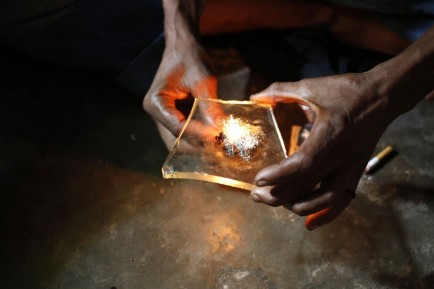WSi News2020-08-26 10:48:36
Rapid growth in heroin smuggling impacts East and Southern Africa
East and Southern Africa have become leading regions for the trade and consumption of large quantities of heroin - the UN estimates that 40 tons of heroin enter Africa annually.
Rapid growth in the smuggling and consumption of heroin is having a dangerous effect on urban development in East and Southern Africa, according to new research by the ENACT organised crime programme.
The booming heroin economy is enabled by unplanned and dysfunctional urbanisation, weak governance, organised crime and widespread corruption among police and politicians in Kenya, Mozambique, Tanzania and South Africa.
There are now probably hundreds of thousands of heroin users in the region, says Simone Haysom, author of a new research paper by ENACT, an EU funded programme that monitors and develops responses to transnational organised crime in Africa. ENACT is implemented by the Institute for Security Studies, INTERPOL and the Global Initiative against Transnational Organised Crime.
The United Nations estimates that 20 to 40 tons of heroin enter Africa annually, but the actual amount may be much higher. Ten years ago, 90% of the drug left the continent for users in the developed world, but a significant amount is now traded and consumed locally, creating a vast illegal market with devastating impact.
Haysom’s report, From the maskani to the mayor: The political economy of heroin markets in East and Southern Africa, is based on fieldwork in Kenya, Tanzania, Uganda, Zambia, Mozambique and South Africa. More than 300 interviews were done with drug dealers, traffickers, middlemen, law enforcement officials, business owners, fishermen, religious leaders, taxi drivers, local politicians and civil society organisations.
Five port cities are central to the regional heroin economy – Stonetown on the island of Zanzibar, Dar es Salaam in Tanzania, Mombasa in Kenya, and South Africa’s Durban and Cape Town. Mombasa is close to coastal landing points, and Cape Town has shipping container-based trade links to Europe. Along with Durban, these cities have seen the development of the largest and most lucrative retail markets and gang structures which make violence a feature of the trade.
Johannesburg and Nairobi are where big players meet to negotiate illicit deals. They are the ‘shadow capitals’ of the heroin economy through their intertwining of illicit and legal trade, strong connections to central political authority, and ability to connect regional and global economies.
Haysom projects further massive growth in the heroin trade alongside the rise of African megacities and expanding towns and smaller cities. 'Drug markets are evolving with these giant urban spaces, and heroin is accelerating corruption of the police, increasing gang violence, eroding government services and devastating communities in a public health crisis.’
For more information contact:
